By Marvin Marroquin • Updated: 02/24/2023 • 25 min read
Guns can be a source of pride, protection, and fun. However, as responsible gun owners, we must also recognize the importance of gun safety.
It only takes one mistake or moment of negligence to cause irreparable harm to ourselves or others. As you read this post, certain safety protocols my seem redundant but I’m intentionally repeating basic safety rules often to drill them into your head. So let’s dive in and ensure that we can all enjoy our firearms responsibly and safely!
What are the 4 fundamental rules of gun safety?
Rule 1: Treat every gun as if it is loaded
When it comes to gun safety, this is the most fundamental rule that should never be taken lightly. It means always assuming that the gun is loaded, even if you think it’s not. This rule ensures that we handle firearms with caution and care, making sure they are pointed in a safe direction at all times, and never pointing them at anything we don’t intend to shoot.
Ignoring this rule can have dire consequences. A simple mistake like not checking the chamber of a gun can lead to unintended discharge, causing injury or death. In 2016, a 19-year-old man accidentally shot himself in the head while posing for a selfie with a handgun, thinking that it was unloaded.
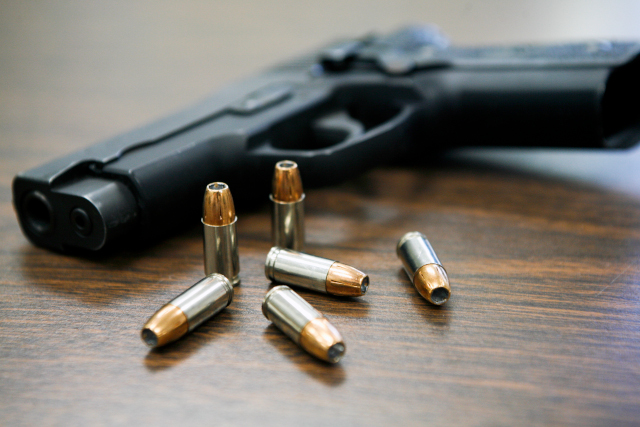
Rule 2: Always point the muzzle in a safe direction
The second rule of gun safety is to always point the gun’s muzzle in a safe direction. A safe direction means that the gun is pointed in a direction where if it were to discharge, it would not cause injury or damage.
This rule is important because it prevents accidental discharges from causing harm. It is important to keep the gun pointed in a safe direction not only while handling it, but also when carrying, storing, or transporting it.
Ignoring this rule can lead to tragic accidents. In 2018, a 12-year-old boy accidentally shot his sister in the head with a shotgun, thinking that it was unloaded. The gun was pointed in an unsafe direction, which led to a devastating outcome.
Rule 3: Keep your finger off the trigger until you’re ready to shoot
The third rule of gun safety is to keep your finger off the trigger until you are ready to shoot. This means that the trigger finger should be kept outside the trigger guard until the shooter has aimed at the intended target and is ready to fire.
This rule is crucial because it prevents accidental discharge, which can lead to harm or damage. By keeping your finger off the trigger until you are ready to shoot, you ensure that the gun will not fire accidentally if your finger slips or if you accidentally press the trigger.
Ignoring this rule can have deadly consequences. In 2013, a 7-year-old boy was accidentally shot and killed by his father who was cleaning his gun. The father’s finger was on the trigger when the gun went off accidentally, which led to the tragic outcome.
Rule 4: Be sure of your target and what’s beyond it
The fourth and final rule of gun safety is to be sure of your target and what’s beyond it. This means that you should know where the bullet will go if it misses the intended target or passes through it.
This rule is crucial because it prevents accidental shootings of unintended targets or people beyond the intended target. By knowing what’s beyond your target, you can prevent the risk of hitting someone or something unintentionally.
Ignoring this rule can have disastrous consequences. In 2015, a man was showing his friend a handgun when he accidentally fired it, shooting his friend in the head. He failed to check what was behind the target, which resulted in a fatal accident.
What’s the best way to handle a gun safely?
How to pick up and put down a gun
Picking up and putting down a gun might seem like a straightforward task, but it’s a crucial aspect of gun safety. Keeping in mind the first rule of gun safety, assume it’s loaded even if you were told it isn’t. A safe way to pick up a gun is to keep it pointed in a safe direction, such as towards the ground, and to grip it firmly by the handle. Keep your finger off the trigger until you’re ready to shoot.
It’s equally important to know how to put down a gun safely. When you’re finished using a firearm, you should first unload it before setting it down. Make sure the chamber is empty and the magazine is removed. Next, keep the gun pointed in a safe direction, such as towards the ground, and place it down gently. Avoid tossing or throwing it down as some guns can cause an accidental discharge, resulting in injury or death. Always place the gun in a safe location where it cannot be accessed by unauthorized persons.
How to carry a gun
It’s essential to carry a gun properly to avoid accidents. The best way to carry a gun is by using a holster that covers the trigger guard completely. A good holster should be made of sturdy material and should fit the gun perfectly with good retention. Simply tossing a gun into a purse or a backpack is not recommended as it can easily fall out, and the trigger can get caught on something, causing it to fire accidentally. There are holsters made for purses and bags that allow for safe carrying and easy access.
It’s also important to remember that carrying a gun is a huge responsibility. When you carry a gun, you have the power to take someone’s life, and it’s not something that should be taken lightly. Being a responsible gun owner means taking the time to learn how to carry a gun safely and being aware of the potential dangers. By following the basic safety rules and using common sense, you can ensure that you and those around you are safe from harm.
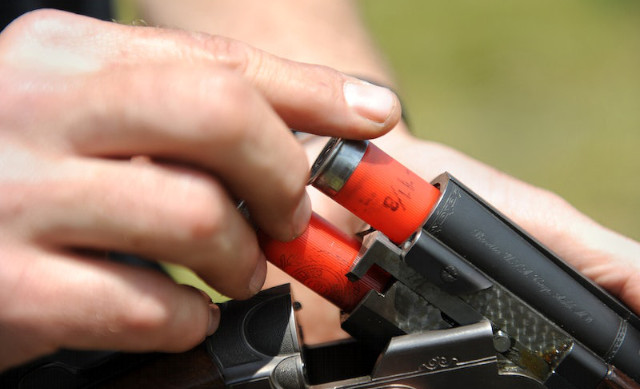
How to load and unload a gun
When loading or unloading a gun, always keep it pointed in a safe direction, away from yourself and others. Before proceeding, ensure that the gun is unloaded and the magazine is removed. Check the chamber to make sure there’s no bullet in it. Always follow the specific instructions of the gun manufacturer when loading or unloading.
It’s important to always use the correct ammunition for the firearm. Using the wrong ammunition can cause serious damage to the gun and can lead to accidents. Make sure the ammunition is clean and free of dirt, debris, or any other foreign objects before loading it into the gun. Always handle ammunition with care and store it in a safe location away from children and unauthorized individuals.
One common mistake people make when loading or unloading a gun is to fail to keep their fingers off the trigger. Keeping your finger off the trigger until you are ready to shoot is an essential safety rule that should never be ignored. Neglecting this rule can cause accidental discharge, leading to severe injuries or death. Always keep your finger off the trigger and outside the trigger guard until you are ready to shoot.
How to store a gun
It’s crucial to make sure that your firearms are securely stored and inaccessible to unauthorized persons, especially children. There are a variety of options available for storing guns safely, ranging from gun safes to lockable cabinets and trigger locks, which I’ll discuss later. It’s important to consider which method of storage is best for your individual situation, as well as the specific gun you are storing.
Properly storing your gun also helps prevent accidents and theft. By keeping your firearm securely stored and out of reach, you decrease the risk of someone accidentally firing it or using it in a criminal act. Additionally, storing your gun in a secure location decreases the likelihood of theft, which not only prevents criminals from obtaining your weapon but also prevents it from being used in future criminal activities.
When storing your gun, it’s important to follow a few basic guidelines. Keep your gun unloaded and locked up when not in use. Make sure the ammunition is stored separately from the gun, and the key or combination to the storage unit is only accessible to authorized persons. Lastly, make sure to periodically check your gun to ensure it is still in good condition and functioning properly. By taking the time to properly store your firearm, you’re not only ensuring its longevity but also the safety of yourself and others.
Gun safety devices and accessories
There are many devices and accessories available that can help prevent accidents and promote responsible gun ownership. From gun safes to trigger locks and chamber flags, these tools can help keep firearms secure and reduce the risk of unauthorized access. Let’s explore some of the most common gun safety devices and accessories and how they can help enhance your firearm safety practices. Whether you are a seasoned gun owner or just starting out, using these tools can help ensure the safety of yourself and those around you.
Trigger locks
These little, yet effective, devices can make a big difference in gun safety. Trigger locks are essentially a mechanism that goes around the trigger of a gun, making it unable to be pulled. They’re often made of metal or hard plastic and can be easily installed on almost any firearm. But why are they important? Well, they can prevent accidental shootings, especially in homes with children or curious visitors. They also make it more difficult for someone to steal your gun and use it for nefarious purposes.
Now, you’re probably wondering how much these handy devices will set you back. The good news is that trigger locks are relatively inexpensive, with most models costing between $10 and $30. That’s a small price to pay for the added safety they provide. But with so many options on the market, which one should you choose? Let me give you a couple of suggestions.
First up, we have the Master Lock 94DSPT Trigger Lock. This affordable option is made of steel and has a four-pin tumbler cylinder that provides extra security. It’s also equipped with protective rubber pads to prevent damage to your firearm. Another great choice is the Lockdown Universal Trigger Lock. This option is made of high-strength polymer and fits almost any firearm. It also has an adjustable ratchet mechanism for a secure fit. Both of these trigger locks are easy to install and offer an added layer of safety to your firearms.
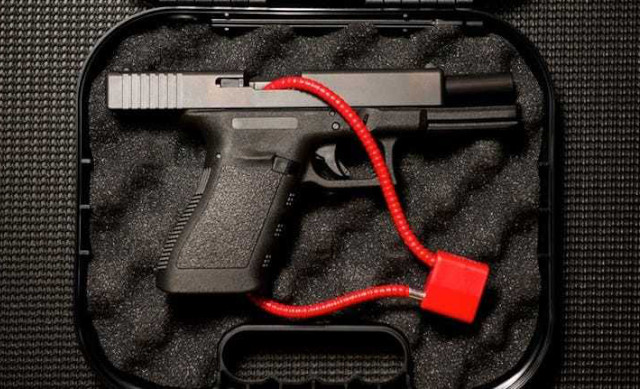
Cable locks
Gun cable locks are a popular type of gun safety device that help to prevent accidental discharge. These locks consist of a cable or cord that is looped through the gun’s chamber, preventing it from being fired. They’re relatively inexpensive and easy to use, making them a great choice for anyone who wants to keep their guns safe.
The good news is that most new guns are sold with cable locks. If you purchased a used gun that didn’t come with one, the average cost of a gun cable lock is around $10 to $20, depending on the brand and quality. Some of the most popular options include Master Lock cable locks, which feature a durable steel cable and a combination lock for added security.
Overall, gun cable locks are a simple yet effective way to keep your guns safe and secure. By preventing accidental discharge, they help to prevent injuries and deaths, making them an essential part of any gun owner’s safety kit. So if you’re looking for an affordable and easy-to-use gun safety device, a cable lock is definitely worth considering.
Gun safes
If you really want to keep your firearms safe and secure, then a gun safe is the way to go. Simply put, a gun safe is a secure container designed to store firearms and ammunition safely. These safes come in different shapes, sizes, and materials, and offer various security features to keep your guns out of the wrong hands. If you’re a gun collector with a large collection, you definitely need a safe.
Gun safes are also required by law in some states and for certain types of firearms. The cost of a gun safe depends on its size, construction, and security features. You can find gun safes for as little as a few hundred dollars or as much as several thousand dollars.
When it comes to purchasing a gun safe, there are many options available. Some popular choices include the GunVault SpeedVault SV500, which is a compact and sturdy option for storing one handgun mounted at the bedside for quick access, and the Steelwater Heavy Duty 20 Long Gun Safe, which can hold up to 20 long guns and features a fireproof design for added protection. Whatever your needs and budget, there’s a gun safe out there that will keep your firearms secure and give you peace of mind.
Gun cases
A gun case may look like and serve the same purpose as a gun safe, the main difference is that safes will have some type of lock mechanism (biometric, key, or numeric combination). Gun cases come in a variety of shapes and sizes, from soft-sided cases to hard-shell cases, and they can be used for transport, storage, or both. Not only do gun cases protect your firearms from damage and wear, but they can also prevent unauthorized access, theft, and accidents.
Soft-sided gun cases are a popular option for those who need to transport their firearms. They are typically made of durable materials like nylon or canvas and feature padding to protect your gun during transport. Hard-shell gun cases, on the other hand, are more rugged and durable, and they offer better protection against impacts and other types of damage. Both types of gun cases come with a variety of features, such as lockable zippers, reinforced handles, and adjustable straps, to make them more secure and comfortable to carry.
The cost of gun cases can vary widely depending on the type, size, and features you are looking for. Soft-sided cases can be found for as little as $20, while hard-shell cases can cost upwards of $200 or more. When shopping for a gun case, it’s important to consider not only the cost but also the level of protection and security it provides. Some good options to consider are the Plano All Weather Tactical Gun Case and the Pelican 1750 Rifle Case, both of which offer excellent protection and security features for your firearms.
Gun safety at the range
When it comes to gun ranges, safety is the top priority. There are certain guidelines that every shooter must follow to ensure the safety of themselves and others around them. These guidelines include wearing appropriate eye and ear protection, always keeping the gun pointed in a safe direction, keeping your finger off the trigger until ready to shoot, and ensuring that the gun is unloaded when not in use. It’s also important to follow any specific rules and regulations set by the particular gun range you’re visiting.
Following these safety guidelines is essential to prevent accidents and injuries from occurring at the gun range. Even experienced shooters can make mistakes, and one small error can have devastating consequences. For example, failure to keep the gun pointed in a safe direction could result in an accidental discharge that could seriously injure or even kill someone nearby.
Eye and ear protection
At the gun range, it’s crucial to protect your eyes and ears. Guns can be extremely loud, and the noise can cause permanent hearing damage if you’re not careful. Additionally, there’s always the risk of an ejected bullet case, debris or shrapnel flying into your eyes when you’re shooting. That’s why it’s essential to use proper eye and ear protection.
The most common type of eye protection used at the gun range is shooting glasses. These glasses are designed to protect your eyes from debris and shrapnel, as well as the harmful UV rays from the sun. They typically cost between $10 to $30 and are available in both clear and tinted lenses. Two great options to consider are the Howard Leight Genesis Shooting Glasses and the Oakley SI Ballistic M Frame 3.0.
For ear protection, there are two main types to choose from: earplugs and earmuffs. Earplugs are inserted directly into the ear canal and are highly effective at reducing noise. Earmuffs, on the other hand, fit over the ears and provide a seal that blocks out sound. Both options are good choices, and many shooters choose to use both at the same time for extra protection, especially when shooting rifles. Prices for ear protection can range from $5 to $30 for earplugs and $50 to $150 for earmuffs. Two great options to consider are the Howard Leight by Honeywell Impact Sport Sound Amplification Electronic Shooting Earmuffs and the SureFire EP4 Sonic Defenders Plus Earplugs.
Don’t skimp on these items, as the cost of medical treatment for eye and ear damage far outweighs the price of good protective gear. Be sure to invest in quality eye and ear protection, such as the options mentioned above, to ensure a safe and enjoyable shooting experience.
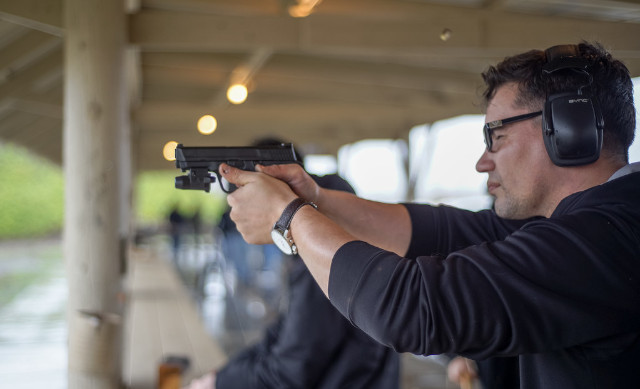
How to interact with range staff
As someone who has spent a fair amount of time at gun ranges, I can tell you the best way to interact with staff is with respect and open communication. These men and women are trained professionals who are there to ensure that you have a safe and enjoyable experience. So, listen to their advice and follow their instructions.
One important thing to keep in mind is to always communicate your questions or concerns with the staff. If you’re unsure about something or need help, don’t be afraid to ask. As the saying goes, no question is too stupid. They’re there to help you and would be more than happy to assist in any way possible. So, approach them with an open and friendly attitude, and you’ll likely get the same in return.
It’s also important to be patient and understanding. The staff are often dealing with a lot of customers and may be busy with other tasks. So, don’t expect them to drop everything to attend to your needs immediately. Instead, wait patiently and politely for your turn. By being patient and understanding, you’ll create a positive and respectful interaction with the staff.
How to handle malfunctions
When it comes to gun range safety, it’s important to know how to handle gun malfunctions. There are different types of malfunctions that can occur, including failure to feed, failure to eject, failure to fire, and failure to extract. Each of these malfunctions requires a different approach, but one thing is for sure: safety must come first.
If you experience a failure to feed, the first thing you should do is keep the gun pointed downrange and wait a few seconds before attempting to clear the malfunction. Attempting to clear the malfunction too quickly could result in a more serious issue. Remove the magazine from the gun and clear the chamber completely. There could a number of reasons for these failures, from faulty cartridges to the way you grip the gun. If the failure to feed persists, check the magazine to ensure it is fully seated and properly loaded. If this doesn’t work, unload the gun and seek assistance from a range safety officer.
If you experience a failure to eject, again, keep the gun pointed downrange and wait a few seconds before attempting to clear the malfunction. Attempting to clear the malfunction too quickly could result in a more serious issue. First, ensure that the magazine is fully seated by tapping it on the bottom. Next, rotate the pistol slightly so that the ejection port is at an angle and pointing to the ground, then rack the slide firmly. This will hopefully eject the spent cartridge and allow a new one to enter the chamber. If the failure to eject persists, the cause may be a dirty gun, so it’s a good idea to clean the gun before continuing to use it. If cleaning the gun doesn’t work, unload the gun and seek assistance from a range safety officer.
If you experience a failure to fire, remember to keep the gun pointed downrange for at least a minute before attempting to clear the malfunction. Attempting to clear the malfunction too quickly could result in a more serious issue. Remove the round from the chamber and completely unload the gun. Inspect the primer on the defective or “un-fired” round to troubleshoot the cause. If there is a well defined indentation on the primer, this usually indicates a faulty round. If there is a shallow mark on the primer, the gun is probably dirty and the firing pin is suffering from carbon buildup. A thorough cleaning will likely help address the situation. If the failure to fire persists, seek assistance from a range safety officer.
If you experience a failure to extract, remember to keep the gun pointed downrange for a few seconds before attempting to clear the malfunction. Attempting to clear the malfunction too quickly could result in a more serious issue. Remove the magazine from the gun and then clear the gun by racking the slide two or three times to completely clear the chamber. Complete a visual inspection of the chamber and magazine well to ensure that the gun is completely empty. You can then reload and try again. If the failure to fire persists, seek assistance from a range safety officer.
Safe range etiquette
When it comes to gun range etiquette, there are a few things to keep in mind to ensure a safe and enjoyable experience for everyone. First, always keep your firearm pointed in a safe direction, with your finger off the trigger until you are ready to shoot. This helps to prevent accidents and ensures that everyone at the range feels safe.
It’s also important to be aware of those around you and respect their space. Keep a safe distance between yourself and other shooters, and don’t handle your firearm while others are downrange. Additionally, be mindful of noise levels and follow any range-specific rules regarding communication and noise.
Another important aspect of gun range etiquette is cleanliness. Be sure to pick up your spent brass and dispose of it properly. This not only helps to keep the range clean and safe, but also shows respect for others who’ll use the range after you.
Finally, always listen to and follow the instructions of the range safety officers. They are there to ensure everyone’s safety and have the authority to remove anyone who isn’t following the rules or acting unsafely. By adhering to safe gun range etiquette, we can all enjoy the shooting sports and the camaraderie that comes with it.
Teaching gun safety to children
Children are curious and don’t understand the dangers associated with firearms. By educating them on safe gun handling, children can learn to respect firearms and avoid accidents. Furthermore, teaching gun safety to young children helps instill good habits that’ll stay with them for life. As a responsible gun owner, it’s our duty to educate our children on gun safety to prevent tragic accidents and promote responsible firearm use.
Start with the basics
There’s no shortcut when it comes to gun safety. As a parent, it’s our responsibility to teach our children the proper way of handling firearms. Starting with the basics means teaching children how to safely handle firearms, what to do when they see one, and the importance of not touching a gun without an adult present. Teaching children the basics of gun safety lays the foundation for more advanced topics that they’ll encounter in the future. It also instills in them a sense of responsibility and helps them understand the gravity of the situation.
The basics will help children gain a better understanding of firearm safety, and it also makes them more receptive to more advanced topics later on. Teaching children gun safety can be a daunting task, but starting with the basics is the most effective way of making sure they understand the importance of firearm safety.
Age-appropriate teaching methods
I believe that age-appropriate teaching methods are essential when it comes to educating children about firearms. The first thing you teach a 5 year old can’t be how to properly draw from a holster with their non-dominant hand. Children of different ages have different levels of understanding and maturity, and it’s crucial to tailor gun safety lessons accordingly. Starting with the basics and working our way up, here are some examples of age-appropriate teaching methods:
For children under 5 years old, the focus should be on the absolute basics. This includes teaching them to never touch a gun without an adult present, and to tell an adult immediately if they find a gun. For this age group, it’s best to use simple language and repetition to reinforce these basic concepts.
For children aged 5 to 9, we can start to expand on these concepts by introducing them to the different parts of a gun and explaining their functions. This age group can also benefit from learning about the different types of guns and their uses. We can also start to introduce the idea of gun safety rules and encourage children to practice safe behavior around firearms. As they get closer to 9, you can even introduce them to firing BB guns or light .22 LR rifles.
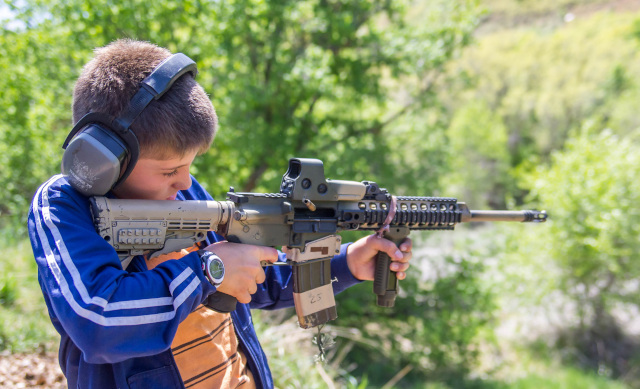
For children aged 9 to 12, we can delve further into the specifics of gun safety. This includes teaching them about gun storage and the importance of keeping firearms locked and out of reach of children. We can also teach them about the dangers of mishandling guns and the potential consequences of gun accidents. At this age, it’s important to emphasize that guns are not toys and should always be treated with respect and caution.
For teenagers, we can teach them more advanced gun safety concepts, such as how to safely handle and clear gun malfunctions. This age group can also benefit from learning about gun laws and regulations, and the importance of responsible gun ownership. We can also encourage teenagers to take gun safety courses and seek out opportunities for professional hands-on training.
By tailoring lessons to different age groups and using age-appropriate teaching methods, we can help children develop a deep understanding and respect for firearms, while also keeping them safe from potential accidents.
The importance of supervision
I can tell you that one of the most critical aspects of keeping children safe around guns is adult supervision. This means that adults need to be actively engaged when children are handling firearms. Kids can be impulsive, and even the most well-behaved child can make a dangerous mistake when handling a gun. By providing constant adult supervision, we can ensure that children are using firearms safely and responsibly.
It’s essential to understand that supervision means more than just being in the same room as a child who’s handling a gun. An adult needs to actively supervise and provide guidance and instruction. This includes demonstrating safe handling techniques, monitoring the child’s behavior and body language, and keeping a watchful eye on the firearm. In addition, adults need to be aware of their surroundings and anticipate potential risks, such as distractions or unexpected visitors, that could impact the child’s safety.
Finally, it’s crucial to remember that children aren’t the only ones who need to be supervised around guns. Adults can also make mistakes and act irresponsibly when handling firearms, and it’s essential to model safe behavior around kids. By setting a positive example and following safe gun handling practices ourselves, we can help ensure that children understand the importance of responsible gun ownership and use. Remember, gun safety is everyone’s responsibility.
What to do if a child finds a gun
Teaching kids what to do if they find a gun is crucial for their safety. First, it’s important to emphasize that children should never touch a gun they find. They should immediately leave the area and tell a trusted adult as soon as possible. I recommend teaching kids the phrase, “Stop, don’t touch, run away, tell a grown-up” to help them remember what to do in case they come across a gun.
In addition, it’s important to instill in children the seriousness of firearms. They need to understand that guns aren’t toys and can cause serious harm if not handled properly. Parents and guardians can use age-appropriate language and illustrations to explain the dangers of guns and why they should never be played with.
It’s also important to create a culture of safety in the home. Parents should secure their own firearms and talk to their kids about the importance of gun safety. By openly discussing firearms and the responsibility that comes with owning them, children can better understand the potential danger and importance of gun safety.
So, there you have it: The Complete Guide to Gun Safety. Remember, owning a gun comes with great responsibility, and it’s crucial to prioritize safety above all else. Whether you’re a seasoned gun owner or just starting out, it’s important to stay educated and up-to-date on best practices for safe gun handling. Many of these topics can be turned into an entire book, especially teaching children about gun safety. The goal here was to give you a complete guide to the many aspects of gun safety. By taking these precautions and practicing responsible gun ownership, we can all do our part to keep ourselves and our communities safe. Stay vigilant, stay safe, and happy shooting.
